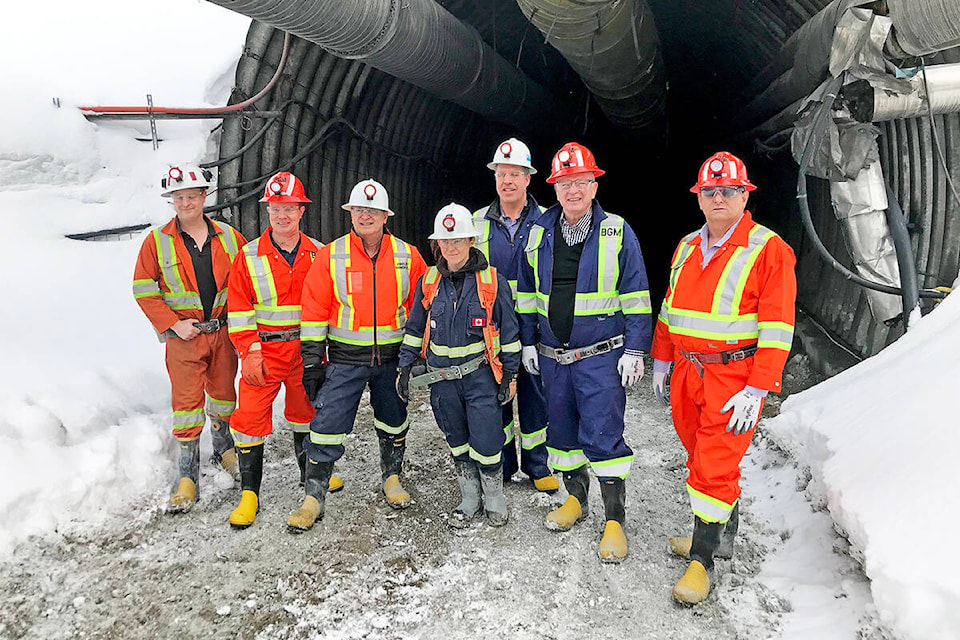Editor’s note: Chris Lodder, president of Osisko Development, issued this response to The Observer (edited only for grammar and Canadian Press publication style):
At Osisko Development, we’re excited to move forward with the Cariboo Gold Project, which was founded on the belief that it’s possible to create jobs and economic opportunity, invest in the future of our communities, and protect the environment.
We have made several commitments to support the sustainable growth of tourism in the community of Wells, through improved local infrastructure, purchasing from tourism-oriented businesses, and by sponsoring and investing in organizations like the Barkerville Heritage Site. We are strongly committed to environmental stewardship and have invested in industry-leading technology to cut emissions and minimize impact on local habitats, water and air quality.
While we believe the vast majority of stakeholders support the project, we listen to any feedback we receive and are working towards completing a Community Effects Management Plan implementing mitigation measures to minimize noise, improve visual quality and enhance emergency preparation. We have also worked closely with District councillors, local residents, and neighbouring Indigenous partners and will continue to do everything in our capability to be a good neighbour as we work to get shovels in the ground.
READ MORE: Group from Wells suggests different position for mining structures
In response to local feedback, we have reduced the height of the Services Building by 33 per cent, eliminated the Island Mountain portal close to the town, relocated the water treatment plant and are working with a landscaping architect to merge our infrastructure to the surrounding environment. We also intend to cover all parts of the site with vegetation and are planting hundreds of trees to reclaim the site to achieve this goal.
Our site selection on a brownfield site, where no reclamation has occurred, was informed by the first principle that impacted sites are always preferred for redevelopment. Our mine site complex is centralized within the mining zone, and its elevation range will minimize impact on the local ecosystems. This has been an important factor in our discussions with local Indigenous partners and with provincial authorities through the Environmental Assessment (EA) process.
There are several conceptual and technical issues with Plan B, including:
Its sloped landscape would require us to cut (blast) a surface equivalent of 25 to 30 hectares, and would substantially increase water management and water treatment in two known endangered species habitats;
It would require access to A-Road, which means all traffic associated with our operation would go in the town of Wells or require the substantial upgrade of a 12 km road (Pinkerton) in the same environment where we have the two endangered species;
We would require additional permitting to replace infrastructure on reclaimed areas of Bonanza Ledge. Noting that one of the existing conditions within the current permitting process is the reclamation of Bonanza Ledge prior to construction of the project;
And, we would face safety issues with workers near high pressure lines, farther from mine rescue.
To put it simply, this plan has no basis from a technical or environmental sustainability perspective.
We’re committed to getting this project built the right way, as has been demonstrated through the rigorous EA process. Based on the current feasibility study, the company expects to invest in excess of $2.7-billion dollars over the initial 12-year life of the project, creating significant lasting economic benefit for the District of Wells, our First Nation partners, the Cariboo Regional District, the City of Quesnel, and the Province of British Columbia.
We will be restarting public meetings to provide updated information to the public and intend to develop a plan to actively monitor and mitigate socio-economic effects of the project, in consultation with our Indigenous partners, the Northern Health Authority, Interior Health, the Ministry of Energy, Mines & Low Carbon Innovation, and the District of Wells.
Osisko Development is committed to building a modern, safe and sustainable mining operation at Cariboo that benefits all, for generations to come.
READ MORE: Province gives environmental assessment green light for Wells gold mine
